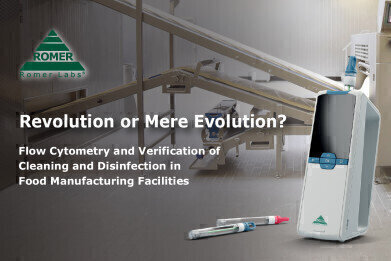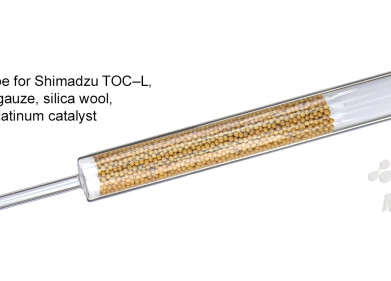Laboratory Products
Revolution or Mere Evolution? Flow Cytometry and Verification of Cleaning and Disinfection in Food Manufacturing Facilities
Sep 09 2022
Food safety depends in large part on the hygienic conditions in food manufacturing facilities. High levels of spoilage bacteria can affect the shelf life and quality of foodstuffs, while the presence of pathogens can lead to serious illness. Food manufacturers must be diligent in keeping their processing environment clean and free of pathogenic microorganisms to prevent the cross-contamination of the final product. However, there are limitations to current methods:
Visual inspection: It cannot ensure that all food residues from the previous run have been cleaned away or that a sanitiser has effectively reduced the microbial level on the surface.
Microbial enumeration with culture-based methods (contact-based & swabbing): These traditional methods of microbial determination is the amount of time it takes to obtain results. Furthermore, most species of bacteria cannot be cultivated on agar, a phenomenon known as the great plate count anomaly.
ATP detection: Potential inhibitors or less than optimal environmental conditions could elicit faulty results. Furthermore, disinfectants can interfere with the reaction, meaning that there may not be a real correlation between living bacteria present on the surface and the results of the ATP measurement. Hence, ATP-based methods are normally used to test surfaces before the application of the disinfectant. However, they are still widely employed because although no bacteria can be counted, results are generated within seconds and a time-to-result available in no other commonly available technology until now.
Introducing Flow Cytometry
Flow cytometry (FCM) refers to a group of techniques that use optical or electrical signals to detect and measure certain physical or chemical properties of cells and particles suspended in a fluid. Nearly 300 studies conducted between 2000 and 2018 assessed FCM as a tool to characterise microbial water quality. This research was able to illustrate the value of FCM in water treatment, distribution and reuse. There is now a body of research documenting successful applications of FCM robust enough to suggest that it could reasonably and realistically see widespread adoption as a routine method for water quality assessment.
Application of impedance flow cytometry to food safety: Introducing CytoQuant®
The CytoQuant® impedance flow cytometer is designed for use in just such areas, including food production facilities and clean rooms. This brings considerable advantages to food producers looking to verify their food safety and cleaning programs: the fast and separate quantification of bacteria and residue particles, the sensitivity of the method, and the robustness of the swabbing kit and the cytometer itself.
CytoQuant® measures and register separate results for bacteria and particles in 30 seconds.
Book a demonstration now.
More information online
Digital Edition
Lab Asia 31.2 April 2024
April 2024
In This Edition Chromatography Articles - Approaches to troubleshooting an SPE method for the analysis of oligonucleotides (pt i) - High-precision liquid flow processes demand full fluidic c...
View all digital editions
Events
Apr 22 2024 Marrakech, Morroco
Making Pharmaceuticals Exhibition & Conference
Apr 23 2024 Coventry, UK
Apr 23 2024 Kintex, South Korea
Apr 23 2024 Seoul, South Korea
Apr 24 2024 Jakarta, Indonesia

.jpg)


.jpg)













